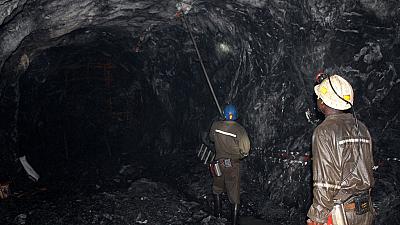The Ministry of Mines and Mining Development in Zimbabwe estimates that it would need roughly $8 million to fund programs aimed at revival of closed mines in Zimbabwe that are shuttered but potentially profitable mines by attracting new finance and enlisting the help of key stakeholders.
Mines Minister Winston Chitando said preparations were being done through the Zimbabwe Mining Development Corporation (ZMDC) to engage investors to revive several shuttered mines at the 2022 pre-budget conference a few days ago.
Also Read: Thyssenkrupp considers using old mines for pumped hydroelectric energy storage
The citizens pressed the government to put aside funds towards opening and reviving old mines in Zimbabwe. This would help to generate more money and jobs for the citizens. To assist promotional initiatives, interaction with investors, and other important stakeholders in reopening shuttered mines, a total of $8 172 604 is required.
Attracting investment for the revival of closed mines in Zimbabwe
Minister Chitando said the government had devised a variety of fiscal and non-fiscal incentives to entice investment as the resource-rich country aspires to achieve a US$12 billion sector by 2023.
The $12 billion business helps the government achieve its goal of converting Zimbabwe into an upper-middle-income country by 2030.
He pointed out that under the Mines and Minerals Act, any mining corporation investing more than US$100 million can apply for a special mining lease, which permits it to negotiate numerous tax discounts with the government.
Minister Chitando also announced that his ministry will infuse $5 million into the Mining Promotion Corporation (MPC) to drive private sector and Zimbabwe Geological Survey exploration requirements for 2022.
He noted that the Ministry of Mines and Mining Development planned to open offices in several villages, including Hwange, Kadoma, Zvishavane, and Lupane, keeping with the Devolution agenda and decentralization policy.
Minister Chitando said the ministry was working to turn the Lupane office into a full-fledged provincial office since the Bulawayo Metropolitan office presently houses most of the province’s workforce and activities.
As a result, funding will be required for the acquisition of land, the construction of appropriate offices, the full equipping of the offices, and the provision of necessary trade instruments. To meet this goal, the ministry will need $150 million.
Zimbabwe’s Lithium production
Minister Chitando, meanwhile, provided an update on one of the country’s most promising mining sub-sectors, lithium production. Minister Chitando claims that Zimbabwe has two lithium producers.
Prospect Resources, listed on the Australian Stock Exchange, completed its lithium processing pilot facility in June of this year.
He claimed that the pilot plant already produced petalite ore containing 4% lithium and 0.5% iron oxide. The product’s low iron content makes it extremely marketable.
The Arcadia Lithium Project’s first phase will see the construction of a factory that will manufacture Low Iron Spodumene for the chemical industry and Ultra-Low Iron Petalite for the industrial market. Phase 2 will see the construction of a lithium hydroxide facility, which will produce lithium hydroxide, lithium carbonate, and lithium sulfide from low iron spodumene.

